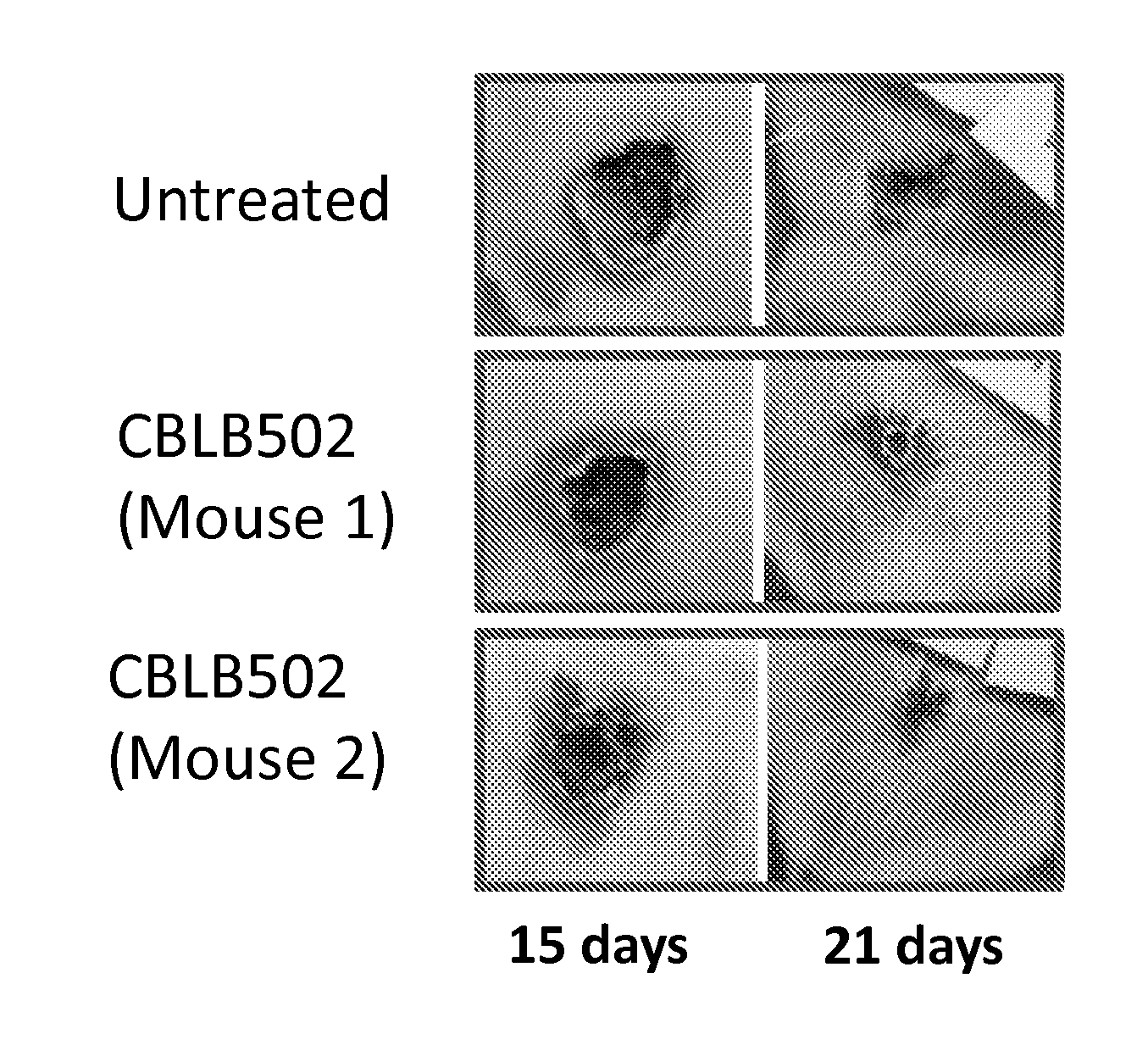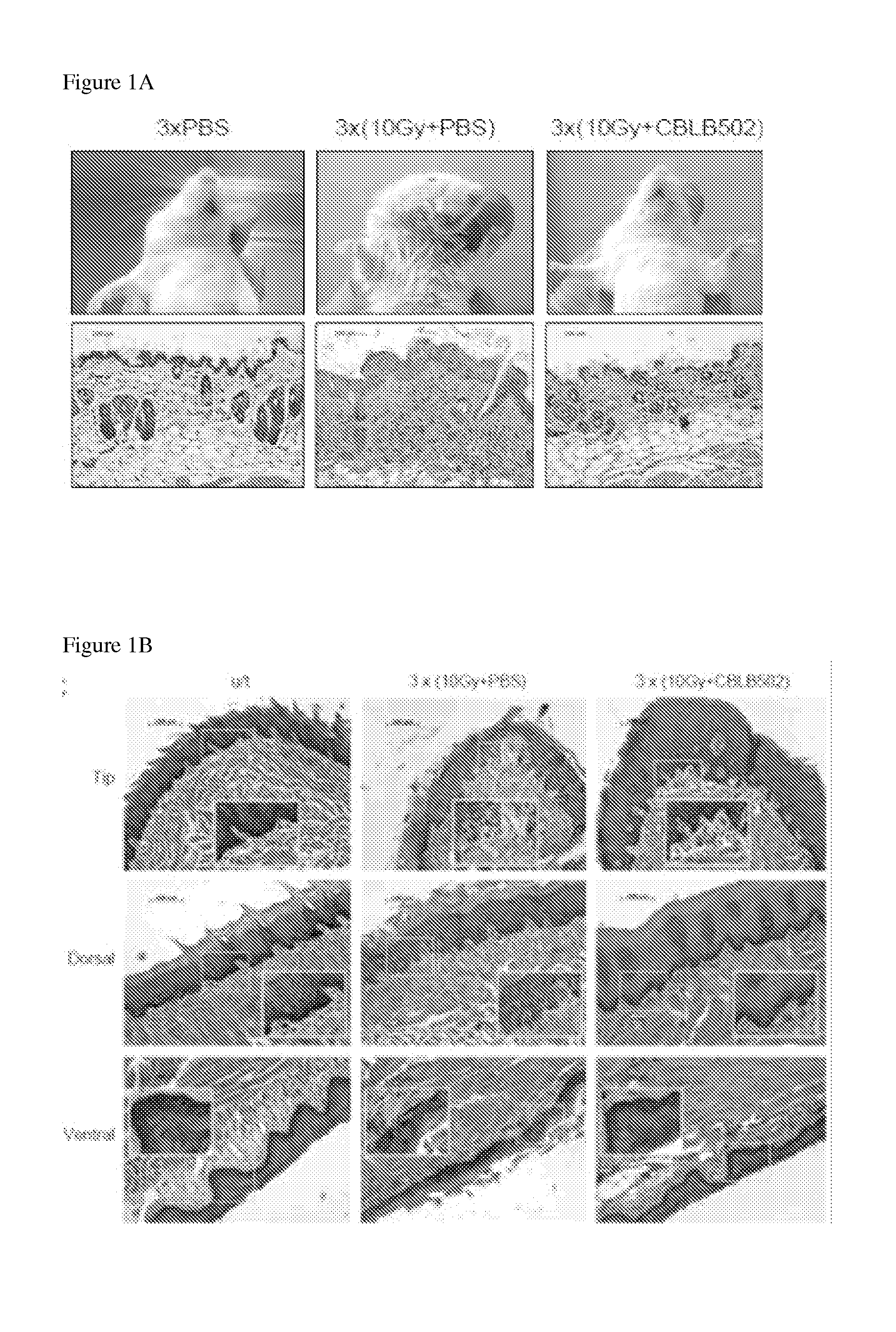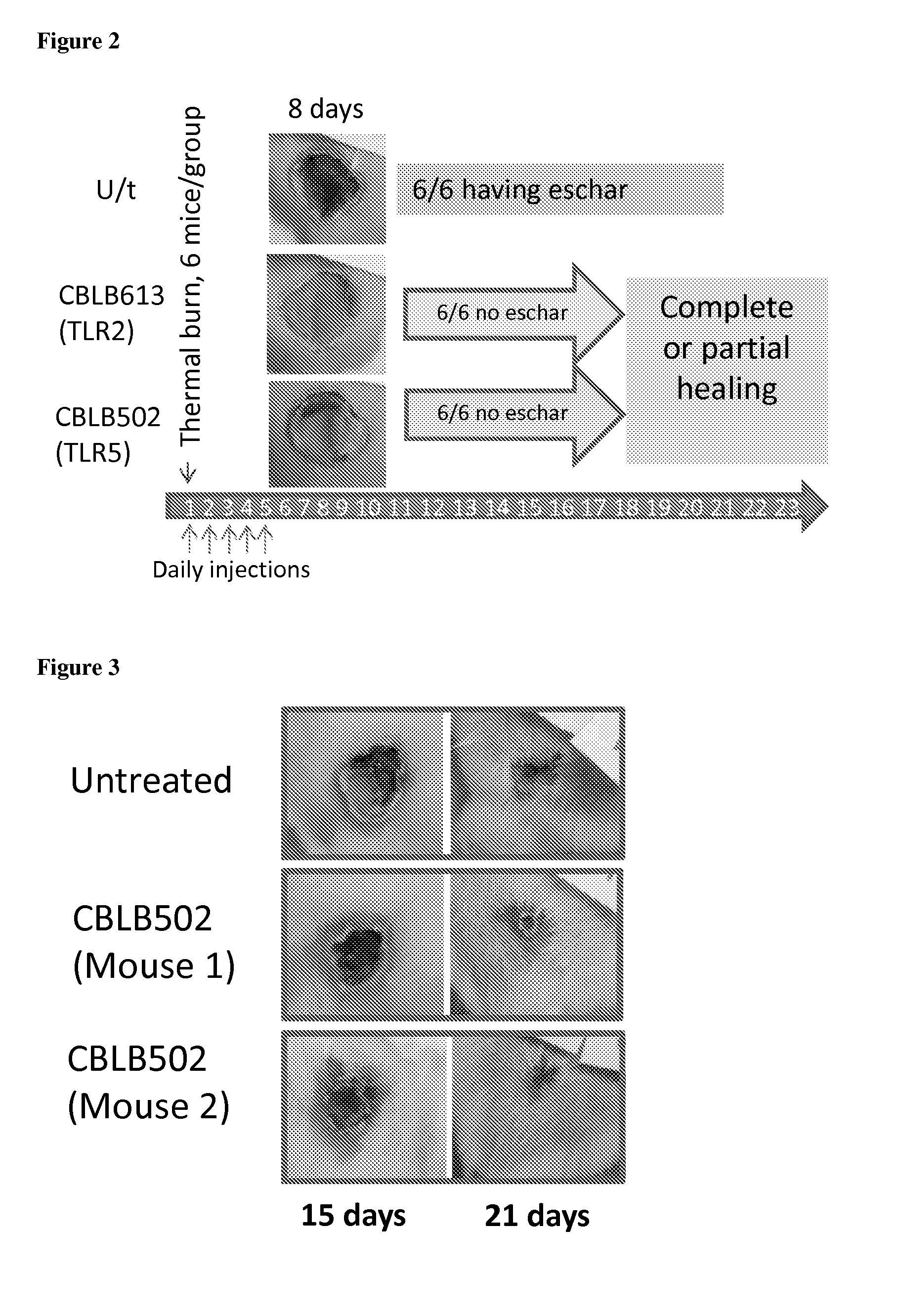Compositions and methods comprising toll like receptor (TLR) stimulating agents for prophylaxis and therapy for damage to dermal epithelium
- Summary
- Abstract
- Description
- Claims
- Application Information
AI Technical Summary
Benefits of technology
Problems solved by technology
Method used
Image
Examples
example 1
[0035]The following materials and methods were used to produce the results presented in the Examples and figures.
[0036]CBLB502 Injection and Irradiation.
[0037]NIH-Swiss mice were injected with PBS or CBLB502, s.c. 1 μg / mouse for fractioned and 2.5 μg / mouse for single radiation treatment 30 min prior to irradiation. For head and neck model, head and neck areas were irradiated with 10, 15, 20 or 25 Gy X-ray IR under isofluorane inhalation anesthesia. Mouse body weight and survival were recorded daily or every second day. For IHC analysis, mice were sacrificed 11 or 14 days after IR. For a single leg irradiation model, mouse hind limbs were exposed to 50 Gy X-ray IR applied in two daily 25 Gy doses (as described in Kumar et al, 2008, Radiat Oncol 3:40). Mice were injected s.c. with either CBLB502 (0.2 mg / kg mouse body weight) or PBS vehicle 1 h after each IR followed by 3 daily injections (5 total injections).
[0038]Assessment of Inflammation.
[0039]The degree of inflammation and its res...
example 2
[0045]This Example demonstrates radioprotective effect of CBLB502 on skin and tongue epithelium during radiation treatment of head and neck area. Representative results are depicted generally in FIGS. 1A and 1B. FIG. 1A provides a photographic representation of results of mice and skin sections from neck area of mice irradiated 3×10 Gy without or with CBLB502 which were taken 14 days after first irradiation (IR) for morphological evaluation of tissue damage using hematoxylin / eosin staining (H&E). FIG. 1B provides photographic representations of samples of dorsal and ventral oral epithelium obtained from mice 11 days after fractioned 30 Gy IR without or with CBLB502 (H&E). Samples obtained from an intact mouse was used as a control (u / t).
[0046]As can be seen from FIGS. 1A and 1B, samples of skin from the irradiated neck area and dorsal and ventral tongue epithelium without prior treatment with CBLB502 displayed severe damage to the dermal and mucosal epithelium (atrophy of the hair f...
example 3
[0047]This Example demonstrates acceleration of burn wound healing by TLR5 (CBLB502) and TLR2 (CBLB613). The results of the TLR agonist therapy comprise faster scab removal and skin regeneration in the treated mice in comparison with untreated control mice (6 mice / group-treatment). In particular, FIG. 2 provides photographic representations of representative burns from CBLB502 and CBLB613 treated mice and untreated control. Shedding eschars (scabs) from burned areas is indicative of faster regeneration of skin after thermal wounding. A significant difference in the healing of the burn injuries was observed on day 11 when all eschars were loose or shed off in all CBLB502 and CBLB613 treated mice, whereas they remained in the untreated control mice. By day 18, the CBLB502 and CBLB613 treated mice exhibited partial or complete healing with significantly smaller wound areas with more regenerated tissues surrounding the wounds than untreated control mice.
PUM
 Login to View More
Login to View More Abstract
Description
Claims
Application Information
 Login to View More
Login to View More - R&D
- Intellectual Property
- Life Sciences
- Materials
- Tech Scout
- Unparalleled Data Quality
- Higher Quality Content
- 60% Fewer Hallucinations
Browse by: Latest US Patents, China's latest patents, Technical Efficacy Thesaurus, Application Domain, Technology Topic, Popular Technical Reports.
© 2025 PatSnap. All rights reserved.Legal|Privacy policy|Modern Slavery Act Transparency Statement|Sitemap|About US| Contact US: help@patsnap.com



